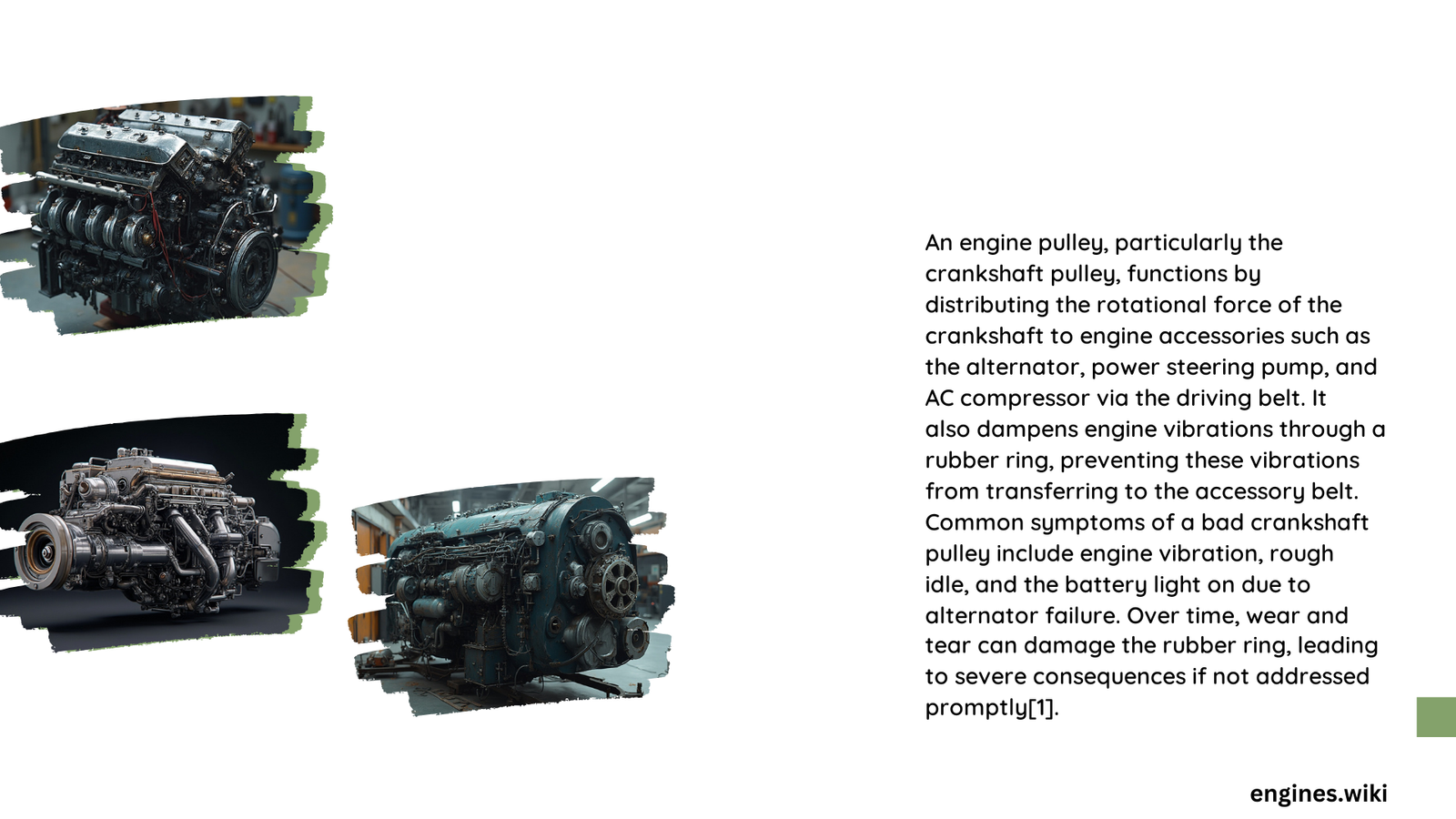Engine pulleys are sophisticated mechanical components that serve as critical power transmission interfaces within automotive systems, enabling efficient energy transfer between the crankshaft and various vehicle accessories. These precision-engineered devices distribute mechanical force across multiple systems, ensuring synchronized operation of alternators, water pumps, power steering, and air conditioning components through strategic belt routing and tension management.
What Are the Primary Functions of Engine Pulleys?
Power Transmission Mechanisms
Engine pulleys operate through several sophisticated mechanisms:
- Crankshaft Power Distribution
- Transfers rotational energy from engine’s crankshaft
- Drives multiple vehicle accessories simultaneously
-
Enables efficient power redistribution
-
Belt Routing Optimization
- Guides serpentine or V-belts around engine compartment
- Maintains precise belt alignment
- Reduces friction and mechanical stress
How Do Different Pulley Types Perform?
Serpentine Belt Pulleys
| Pulley Type | Performance Characteristics | Efficiency Rating |
|---|---|---|
| Crankshaft Pulley | Primary power transmission | 95-98% |
| Idler Pulley | Belt tension management | 90-93% |
| Tensioner Pulley | Load distribution | 88-92% |
Critical Performance Parameters
Engine pulleys must manage complex mechanical requirements:
- Torque Handling
- Typical range: 10-100 Nm
- Depends on engine size and application
-
Must withstand high rotational speeds
-
Material Considerations
- Typically constructed from:
- High-grade aluminum alloys
- Reinforced composite materials
- Heat-resistant steel variants
What Maintenance Strategies Ensure Optimal Performance?
Inspection and Replacement Guidelines
- Recommended Inspection Intervals
- Every 30,000-50,000 miles
-
Check for:
- Surface wear
- Alignment accuracy
- Bearing condition
-
Warning Signs of Pulley Failure
- Unusual squealing noises
- Visible belt wear
- Reduced accessory performance
- Inconsistent belt tension
Technical Specifications and Performance Metrics
Efficiency Impact
Proper pulley function directly influences:
– Fuel efficiency (potential 5-10% improvement)
– Horsepower transmission
– Overall vehicle performance
Advanced Engineering Considerations
Design Complexity
Modern engine pulleys incorporate:
– Precision-machined surfaces
– Advanced bearing technologies
– Vibration dampening mechanisms
Cost and Replacement Factors
Typical Replacement Costs
– Serpentine belt: $50-$200
– Idler/tensioner pulley: $20-$100
– Labor costs: $50-$200
Conclusion

Engine pulleys represent a critical yet often overlooked component in automotive power transmission systems. Their sophisticated design and precise engineering ensure efficient, reliable vehicle operation across diverse driving conditions.
